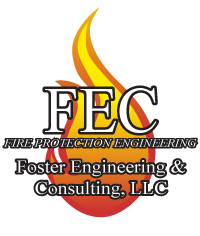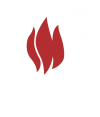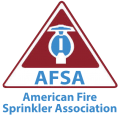There are certain occupancies that require more robust designs and safety protocols to ensure building commodities and occupants are adequately protected. Storage and hazardous occupancies have nuances that can be difficult to grasp if you haven’t spent a lot of time in their related code sections. In our last article “Importance of Getting a Second Opinion”, we discussed some nuances in categorizing commodities to apply the related storage requirements. In this article, we will be discussing five questions to ask when evaluating hazardous occupancies using the International Code Council International Building Code (IBC) and International Fire Code (IFC).
There are 5 different types of Group H “high-hazard” occupancies discussed in the IBC. Each Group H occupancy has specific requirements related to the hazard they’re protecting but many of the initial questions remain the same. Here are five questions to ask when evaluating hazardous occupancies:
1. Which codes are applicable?
This one should be a no-brainer but is worth mentioning anyways. It’s always important to verify which codes/standards and related editions are adopted or used within a jurisdiction. This becomes especially important when doing work outside of your home area. When using the IBC and IFC, check to see if the governing jurisdiction has changes or amendments with different requirements.
2. How much material am I storing?

This typically hints at the Maximum Allowable Quantity (MAQ) limits discussed in the IBC and IFC but can also relate to how you are storing the material. On a recent project, we recommended the use of flammable liquid cabinets (FLCs) for a relatively small quantity of a class II flammable liquid. The liquid reacted with metal and needed to be stored in plastic drums—an arrangement that doesn’t have many design options in NFPA 30, Flammable & Combustible Liquids Code. Implementing this strategy meant that the sprinkler system design did not need to be modified to support this arrangement.
Most of the time, exceeding the MAQ is what pushes you into the hazardous occupancies. When the MAQ for a building or area is exceeded for a certain material, the additional requirements of hazardous occupancies apply. There are methods to avoid exceeding the MAQ, like using control areas or FLCs, however the added expense of these options might not be something that interests your client. That said, the additional features that come with a hazardous occupancy may prove to be more expensive—the important thing is that you let your client know what their options are early in the design process.
3. What is my allowable area?
Depending on what hazardous occupancy you’re dealing with, the area limitations can vary. Intuitively, the higher hazard classifications have smaller allowable areas. The most notable difference from other occupancies is the fact that all new Group H occupancies are required to have an automatic sprinkler system. The only exception is for H-4 and H-5 occupancies in existing buildings so long as they comply with the requirements discussed in the Existing Building Code.
There are many allowances and assumptions of risk formulated into the allowable areas discussed in the IBC. The overall protection strategy outlined in the IBC and IFC is based on these occupancies being a certain size. Thus it’s critical to verify how big a hazardous area can be.
P.S – It’s equally important to look at separation requirements when evaluating hazardous occupancies adjacent to other occupancies!
4. What are the additional requirements for the hazardous material I’m storing?
In the IFC, there’s a general hazardous occupancy chapter (Chapter 50, 2018 ed.) which pertains to all hazardous occupancies and there are hazard-specific chapters (Chapter 51-67, 2018 ed.) which provide requirements tailored to a given hazard. For example, Chapter 50 discusses requirements like MAQs, construction requirements, and requirements for storage vs. use, dispensing or handling of a given material. A hazard-specific chapter, like Chapter 57 which focuses on flammable/combustible liquids, has requirements for labeling, piping/storage arrangement, specific fire protection system strategies, etc. These requirements can add significant cost to a project so it’s important to identify them early in discussions with your client.
5. What fire protection controls and egress requirements do I have?
While most of the additional requirements will be discussed in the chapters as referenced above, it’s always a good idea to go back a review the “Fire and Smoke Protection Features” and “Means of Egress” chapters. Remember that individuals cannot be made to egress through an occupancy of a higher hazard. For example, an attached office space that shares a wall with a H-3 warehouse must have exterior exits—occupants must not be forced to pass through the H-3 occupancy to exit the building in both normal and emergency conditions.

Travel distances, number of exits, and fire alarm and detection requirements all fall into this category as well. For example, if you have a sprinkler system (as required in new Group H occupancies), you’ll need—at a minimum—a dedicated function fire alarm system to supervise the system. The requirements in the hazardous occupancies assume compliance with the requirements in preceding chapters. As such, be sure to provide your client a wholistic code evaluation to avoid any unwanted surprises from the building official.
In conclusion, there is a lot to unpack in the IBC and IFC. These codes have numerous requirements that reference other sections (or completely different codes) which can get confusing. Fire Protection professionals use their experience and knowledge to help you navigate the complexity of these codes and standards. Getting these requirements right is essential in developing a comprehensive fire protection strategy that keeps people and property safe. It also helps avoid those costly surprises when applying for permitting.
Foster engineering is a fire protection engineering consulting firm in Columbia, SC that offers design services, fire protection evaluations, acceptance testing, and more. For more information, visit our website at www.fosterengr.com.




